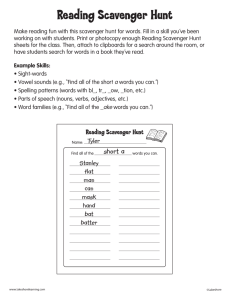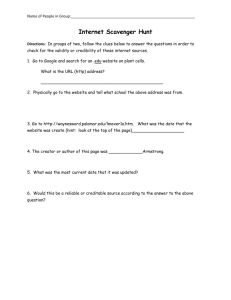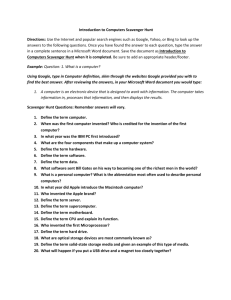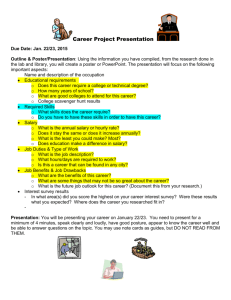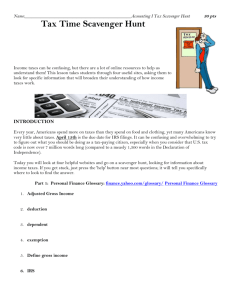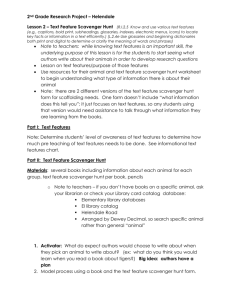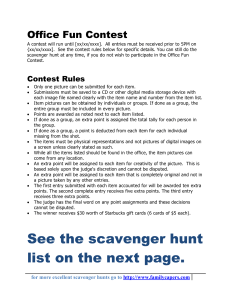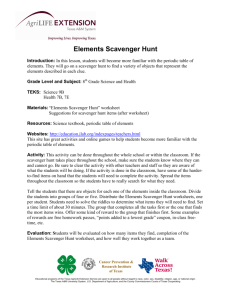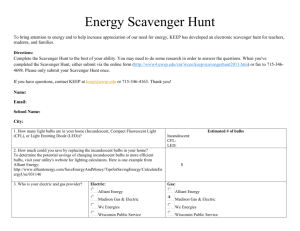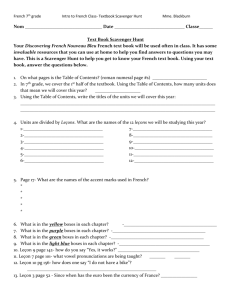Scavenger Hunt
advertisement
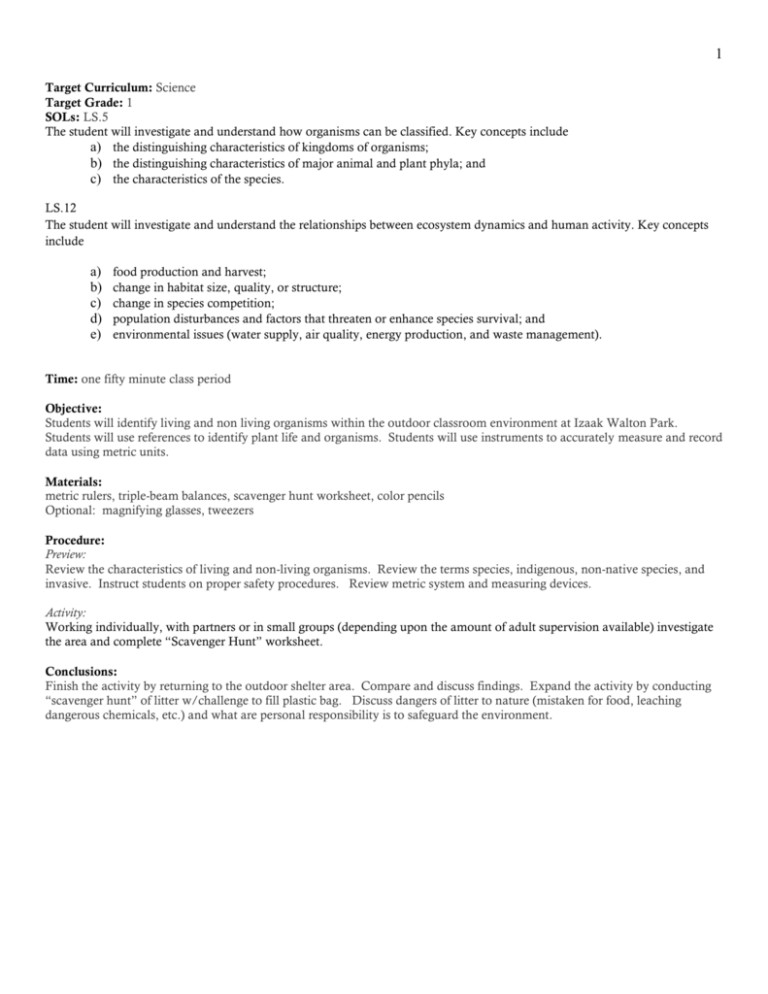
1 Target Curriculum: Science Target Grade: 1 SOLs: LS.5 The student will investigate and understand how organisms can be classified. Key concepts include a) the distinguishing characteristics of kingdoms of organisms; b) the distinguishing characteristics of major animal and plant phyla; and c) the characteristics of the species. LS.12 The student will investigate and understand the relationships between ecosystem dynamics and human activity. Key concepts include a) b) c) d) e) food production and harvest; change in habitat size, quality, or structure; change in species competition; population disturbances and factors that threaten or enhance species survival; and environmental issues (water supply, air quality, energy production, and waste management). Time: one fifty minute class period Objective: Students will identify living and non living organisms within the outdoor classroom environment at Izaak Walton Park. Students will use references to identify plant life and organisms. Students will use instruments to accurately measure and record data using metric units. Materials: metric rulers, triple-beam balances, scavenger hunt worksheet, color pencils Optional: magnifying glasses, tweezers Procedure: Preview: Review the characteristics of living and non-living organisms. Review the terms species, indigenous, non-native species, and invasive. Instruct students on proper safety procedures. Review metric system and measuring devices. Activity: Working individually, with partners or in small groups (depending upon the amount of adult supervision available) investigate the area and complete “Scavenger Hunt” worksheet. Conclusions: Finish the activity by returning to the outdoor shelter area. Compare and discuss findings. Expand the activity by conducting “scavenger hunt” of litter w/challenge to fill plastic bag. Discuss dangers of litter to nature (mistaken for food, leaching dangerous chemicals, etc.) and what are personal responsibility is to safeguard the environment. 2 Scavenger Hunt Look for the following things. When you find them, write or draw a description in the blanks. 1. Three different kinds of leaves. Can you name them, if not sketch them below and identify using classroom resources. __________________________________________________________________ __________________________________________________________________ __________________________________________________________________ 2. An insect. Where did you find it? __________________________________________________________________ __________________________________________________________________ 3. Something living under a log or rock. __________________________________________________________________ __________________________________________________________________ __________________________________________________________________ 4. Something that shows an animal may have passed there (animal track, scratches, droppings). __________________________________________________________________ __________________________________________________________________ __________________________________________________________________ 5. A seed built to float in the air. __________________________________________________________________ __________________________________________________________________ __________________________________________________________________ 3 6. Three or more things trout need to survive. __________________________________________________________________ __________________________________________________________________ __________________________________________________________________ 7. Sit quietly with your eyes closed for a minute or two. What sounds do you hear? (Try to ignore people sounds.) __________________________________________________________________ __________________________________________________________________ __________________________________________________________________ 8. Something that is not native to the area. How do you think it got there? (e.g. bottle, caps, candy, wrap, etc.) __________________________________________________________________ __________________________________________________________________ __________________________________________________________________ 9. One thing trout eats. __________________________________________________________________ 10. An animal home on a tree or other plant. __________________________________________________________________ __________________________________________________________________ __________________________________________________________________ 11. An egg or larva __________________________________________________________________ __________________________________________________________________
